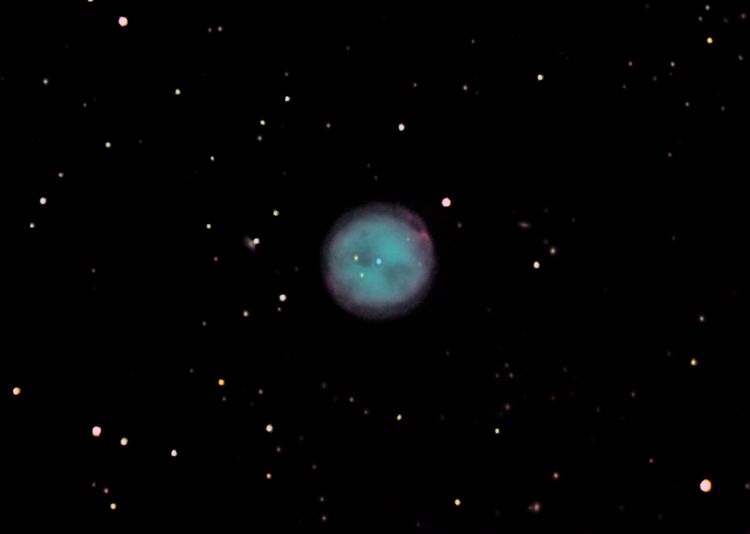
This is a CCD image of the Owl Nebula in Ursa Major. This nebula is one of the largest known planetary nebula, discovered by P. Mechain in 1781. It is one of only four planetary nebulae that made Messier's list. Lord Rosse is credited with giving the nebula its common name because of its striking resemblance to the face of an owl. The nebula was formed by a dying star throwing off gasses. The central star is a hot dwarf star, with a radius that is only 4% of the Sun's radius. The total mass of the nebula has been computed to be about 10% or 15% of the Sun's mass, which is fairly large for a planetary nebula. The gasses forming the nebula are expanding away from the central dwarf star, and the nebula is now about 3 light-years in diameter.
This is an LRGB color composite CCD image taken on three different nights. The RGB color data was taken on one night, and the L-channel data was taken on two subsequent consecutive nights. All images were captured at prime focus on a Takahashi FCT-150 refractor using an SBIG ST-8 CCD at f7. MaxIm DL/CCD was used for image acquisition and processing.
M97 (NGC 3587)
Constellation: Ursa Major
RA: 11h 15m 04.0s Dec: +54d 59' 33"
February 2 & 11-12, 2004
Image by Sid Leach
Scottsdale, Arizona
Recent Images.
Complete list of images.
Description of equipment used to acquire images.
Home
Feedback and comments should go to Sid